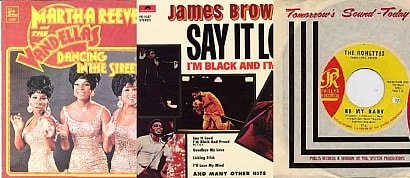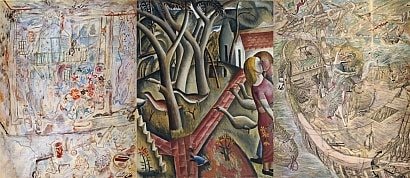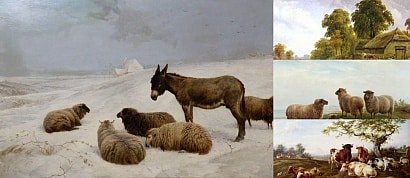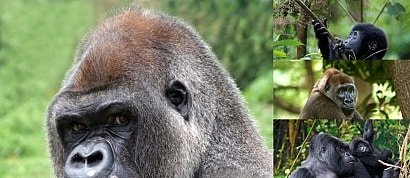Great Bustards, Little Bustards!
Bustards, including floricans and korhaans, are large and highly terrestrial birds mainly associated with dry open country and steppes in the Old World. They range in length from 40 to 150 cm (16 to 59 in). They make up the family Otididae (formerly known as Otidae). Bustards are omnivorous and opportunistic.
Bustards are all fairly large with the two largest species, the kori bustard (Ardeotis kori) and the great bustard (Otis tarda), being frequently cited as the world's heaviest flying birds. In both the largest species, large males exceed a weight 20 kg (44 lb), weigh around 13.5 kg (30 lb) on average and can attaining a total length of 150 cm (59 in). The smallest species is the little brown bustard (Eupodotis humilis), which is around 40 cm (16 in) long and weighs around 600 g (1.3 lb) on average. In most bustards, males are substantially larger than females, often about 30% longer and sometimes more than twice the weight. They are among the most sexually dimorphic groups of birds. In only the floricans is the sexual dimorphism reverse, with the adult female being slightly larger and heavier than the male.
The wings have 10 primaries and 16-24 secondary feathers. There are 18-20 feathers in the tail. The plumage is predominantly cryptic.
Bustards are omnivorous, feeding principally on seeds and invertebrates. They make their nests on the ground, making their eggs and offspring often very vulnerable to predation. They walk steadily on strong legs and big toes, pecking for food as they go. Most prefer to run or walk over flying. They have long broad wings with "fingered" wingtips, and striking patterns in flight. Many have interesting mating displays, such as inflating throat sacs or elevating elaborate feathered crests. The female lays three to five dark, speckled eggs in a scrape in the ground, and incubates them alone.
Bustards are gregarious outside the breeding season, but are very wary and difficult to approach in the open habitats they prefer.
(Wikipedia)
Bustard: en.wikipedia.org/wiki/Bustard
Great Bustard : en.wikipedia.org/wiki/Great_bustard
Great Indian Bustard : en.wikipedia.org/wiki/Great_Indian_bustard
Little Bustard : en.wikipedia.org/wiki/Little_bustard
Kori Bustard : en.wikipedia.org/wiki/Kori_bustard
Bustards are all fairly large with the two largest species, the kori bustard (Ardeotis kori) and the great bustard (Otis tarda), being frequently cited as the world's heaviest flying birds. In both the largest species, large males exceed a weight 20 kg (44 lb), weigh around 13.5 kg (30 lb) on average and can attaining a total length of 150 cm (59 in). The smallest species is the little brown bustard (Eupodotis humilis), which is around 40 cm (16 in) long and weighs around 600 g (1.3 lb) on average. In most bustards, males are substantially larger than females, often about 30% longer and sometimes more than twice the weight. They are among the most sexually dimorphic groups of birds. In only the floricans is the sexual dimorphism reverse, with the adult female being slightly larger and heavier than the male.
The wings have 10 primaries and 16-24 secondary feathers. There are 18-20 feathers in the tail. The plumage is predominantly cryptic.
Bustards are omnivorous, feeding principally on seeds and invertebrates. They make their nests on the ground, making their eggs and offspring often very vulnerable to predation. They walk steadily on strong legs and big toes, pecking for food as they go. Most prefer to run or walk over flying. They have long broad wings with "fingered" wingtips, and striking patterns in flight. Many have interesting mating displays, such as inflating throat sacs or elevating elaborate feathered crests. The female lays three to five dark, speckled eggs in a scrape in the ground, and incubates them alone.
Bustards are gregarious outside the breeding season, but are very wary and difficult to approach in the open habitats they prefer.
(Wikipedia)
Bustard: en.wikipedia.org/wiki/Bustard
Great Bustard : en.wikipedia.org/wiki/Great_bustard
Great Indian Bustard : en.wikipedia.org/wiki/Great_Indian_bustard
Little Bustard : en.wikipedia.org/wiki/Little_bustard
Kori Bustard : en.wikipedia.org/wiki/Kori_bustard
Added to
People who voted for this also voted for
MUSIC
PERSONNAGES ET SCENES DE FILMS, SERIES, CLIPS ...
1960s Italian Science Fiction Movies
My favorite models - letter A
The Fashion of Lupita Nyong'o
Music...Remember Music of 1989
My Favorite Trip-Hop
TV que he visto en Enero 2018
Favourite R&B Songs: Classics
Fantasy Couples
Tragically Beautiful - Brittany Murphy
Madonna's Face
Bond Films and Their Influences
Jolie Já Contracenou Com Quem Eu Queria
Superheroes
More lists from Kenji
Welsh Artists: David Jones
My Lists of Beautiful Films
Beautiful Films: Abraham Valley
old pond - frog jumps in - sound of water
Films about Artists: a Selection
Welsh Artists: Charles Jones
Gorillas
 Login
Login




































